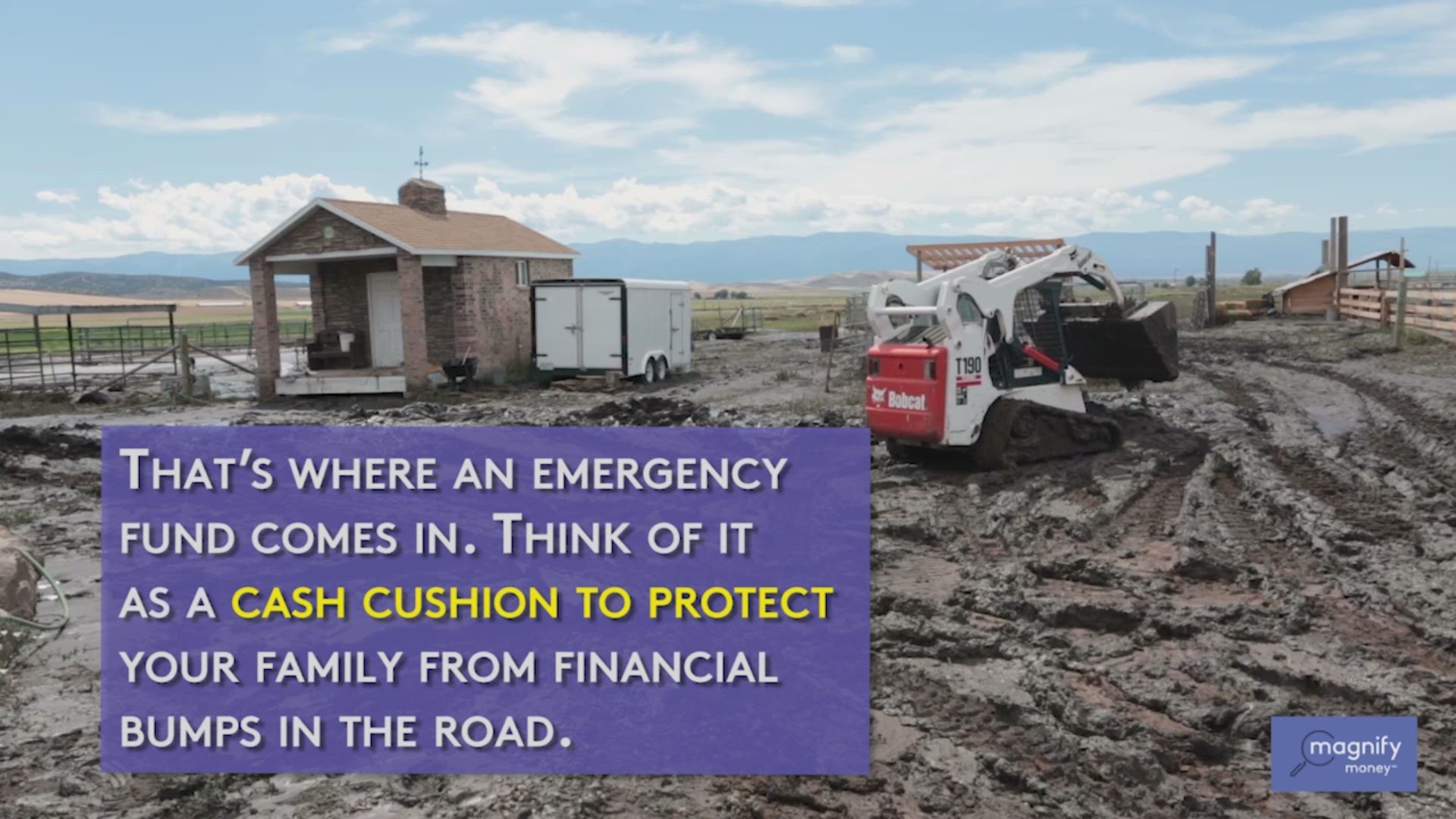What parent doesn’t want to give their child a better life than they had?
No matter the point in history, parents strive to provide the best for their children. Often, what mom and dad seek to provide is something they lacked in their own experience.
And with so many members of Gen X and Gen Y struggling under the weight of student loans, saving for college is high on the list of things today’s parents may want to do for their kids to make their future transition into adulthood easier.
“On an airplane, flight attendants tell you to put on your own mask before you put on your kids' mask in case of emergency,” says Jude Boudreaux, who holds a CFP® and is the founder of Upperline Financial in New Orleans. “This is the same thing.”
But while college savings is important and a good financial goal to set, it is not the most important thing to think about when it comes to your finances.
It may be hard to hear, but couples and anyone with children need to meet three other critical financial milestones before saving for college. Here are the financial boxes you need to check first.
Creating an Emergency Fund
Most money earmarked for college savings goes into vehicles like 529 plans. There are good reasons to do so: These accounts are specifically designed for the purpose of saving for college costs.
They provide tax advantages while allowing you to invest your money to potentially earn returns on your contributions. The potential downside? Those contributions must be used for qualifying education expenses for the beneficiary of the account.
If you withdraw funds for any other reason, you’ll pay for it. You can expect to pay income tax on the money you take out of the account, plus a 10% penalty on the withdrawal.
While it may seem unfair on the surface, this penalty can work as an incentive to help people keep savings in place until they can be used for their designated purpose.
Otherwise, it’s far too easy to dip into the account when temptation arises and spend the money on something else entirely — leaving your kids with less for college than your original good intentions planned for.
Still, it can create a big problem if you furiously save all your cash in a 529 plan but don’t set aside anything for your own financial emergencies that may pop up for your family between now and the time your kids go off to school.
Funding an emergency savings account should be one of your top financial priorities, no matter who you are. And in fact, the more children you have — and therefore increased financial responsibility you take on — the more you should keep your emergency savings fully funded.


This acts as a cash cushion to protect you and your family from unexpected costs that might otherwise wipe out the available money in your checking account. It can also help you get through tough times you didn’t necessarily plan on, like an illness that generates expensive medical bills or a job loss for you or your spouse.
When you can pull from your emergency fund, you can cover these costs without getting into savings earmarked for specific purposes. You can also avoid putting charges on your credit card that you can’t pay off right away, which will cost you more in interest and could lead to a nasty cycle of credit card debt that’s hard to repay.
Paying Down Debt
Yes, paying down debt is actually a form of saving. Just think about all of the money you won’t be paying in interest fees once you are debt free.
But what if you already have credit card debt or other balances from your own student loans? Consider this priority number two over college savings.
That doesn’t mean you need to pay off every last dollar of debt that’s in your name. However, it’s wise to create a debt repayment plan that you can use to actively work toward paying off all your consumer balances.
You need to understand a few pieces of information about your debt before creating a strategy to get rid of it:
● The total amount of each balance due.
● The minimum payment required for each.
● The interest rate of each balance.
Avalanche or Snowball?
Pay the minimums on each balance to prevent your debt from growing even larger. Then, you can use one of two debt repayment methods to help you make progress — the debt snowball or the debt avalanche method.
The debt snowball starts by focusing on the smallest balance and paying it off in full as quickly as you can. That means making a larger-than-the-minimum payment on that debt (while making at least the minimum on all other balances).
Because you start with the smallest balance, you enjoy a “win” faster than you would if you tackled the biggest balance first, since it takes less time to pay off the smaller debt. This is helpful when you’re struggling to feel motivated — or if you feel so overwhelmed that you’re taking no action at all right now.
But it’s not the best method to save the most money, mathematically speaking. For that, you’ll want the debt avalanche method. This strategy focuses on paying off debts from the balance with the highest interest rate down to the lowest.
This is the most effective way to pay the least on your debt. But it can be tough to stay motivated, since you may pay on a large balance for a long time (when you’d rather just knock at least one of them out right away!).
Once you know what you’re dealing with when it comes to your debt and have a plan to pay it off, you can consider the other financial goals you want to work toward at the same time. That could include college savings — as long as your final priority is in place first.
To get a jump-start, check out MagnifyMoney’s Snowball vs. Avalanche calculator to see how much money you can save using either method.
Your Retirement Strategy
Just like you don’t need to pay off every cent of debt first, you don’t need to have your nest egg fully funded before you bother saving for a child’s education. But you do need to be on the path to meeting your future financial goals.


“I understand the desire to want to give to your children, but if you're not preparing for your own retirement you're really placing yourself in a risky situation,” says Boudreaux.
That’s because your retirement savings needs to cover a much longer period of your life than college savings needs to provide for your children, says Neal Frankle, a Certified Financial Planner™ and the creator of financial blog Wealth Pilgrim.
“The focus for people in this situation must be on their own future as the need is far greater and the retirement period is much longer than school,” he says. “The focus for the student should be on reducing costs.”
Frankle suggests encouraging your child to start at a community college as one way to accomplish this. Eric Rosenberg, a financial writer at Personal Profitability, adds that your student has access to scholarships and grants, too — and reminds parents there are no such options for retirement.
“It takes decades to save for retirement,” Rosenberg says. On the other hand, your kids can work to earn their degree and take a paying job after school — which will help pay for their loans if they need to take them. But you can’t get loans for retirement, much less grants. “You’re on your own,” says Rosenberg.
For that reason, Ryan Frailich, a fee-only financial planner with Deliberate Finances, feels taking care of your own financial needs first is one of the most selfless things a parent can do.
“By making sure your retirement is in order and on track before looking at college savings, you avoid putting your children in the position of having to support you in the future — right at the time they're trying to raise families of their own,” Frailich says.
MagnifyMoney is a price comparison and financial education website, founded by former bankers who use their knowledge of how the system works to help you save money.

